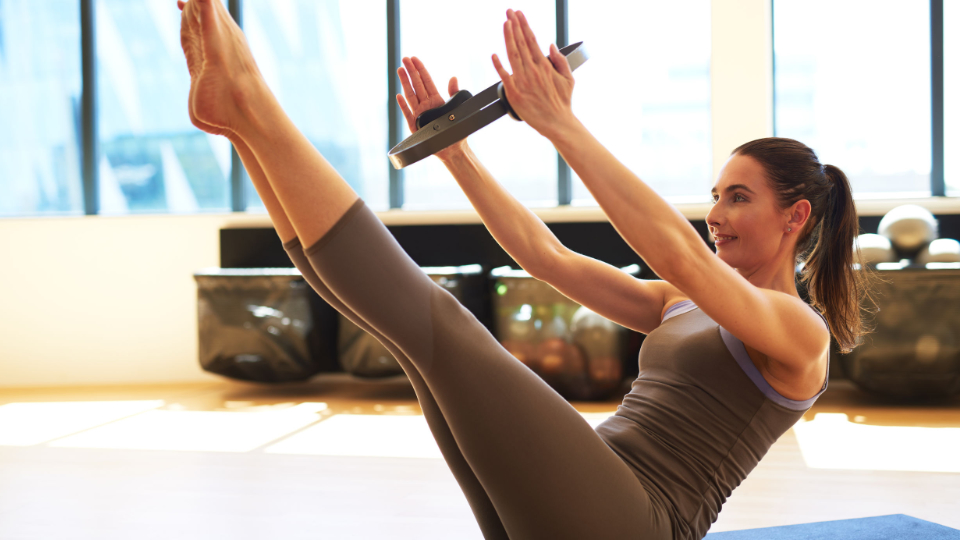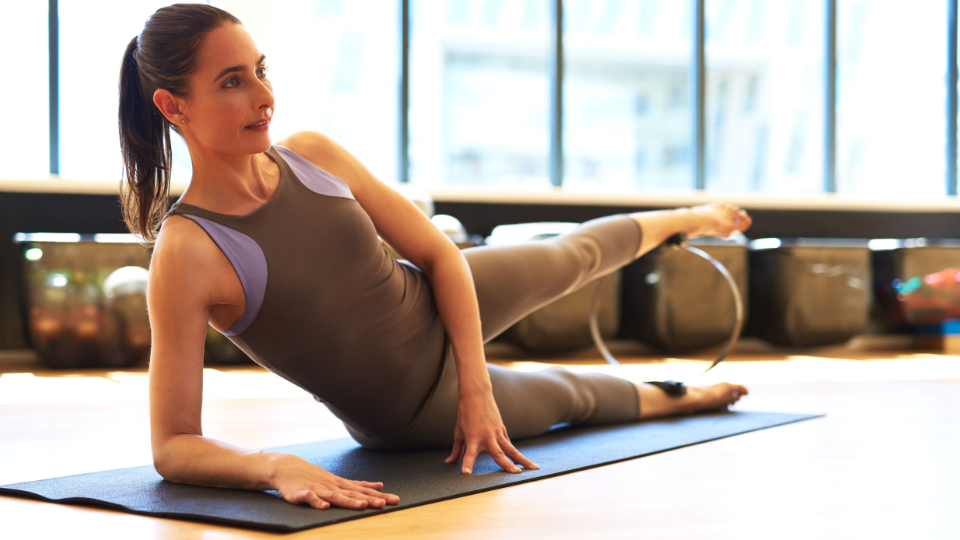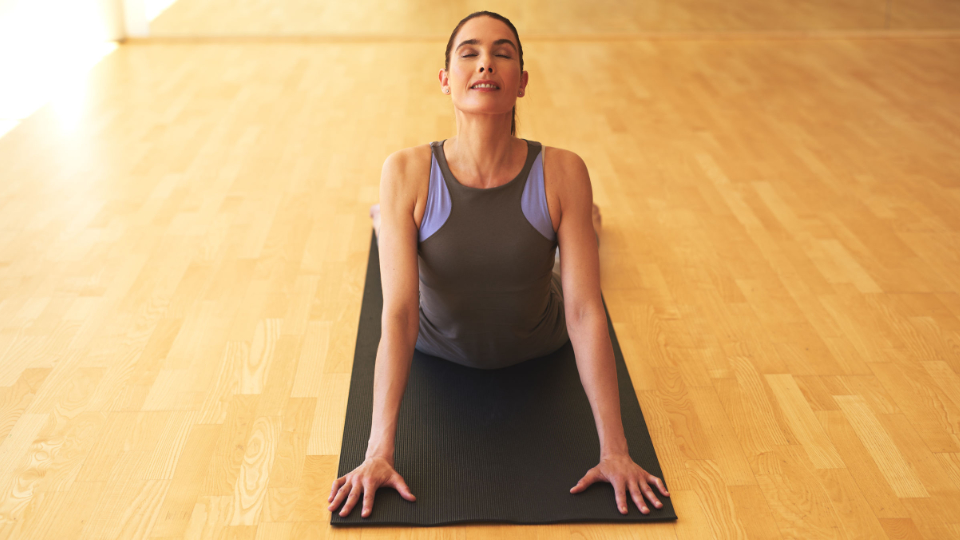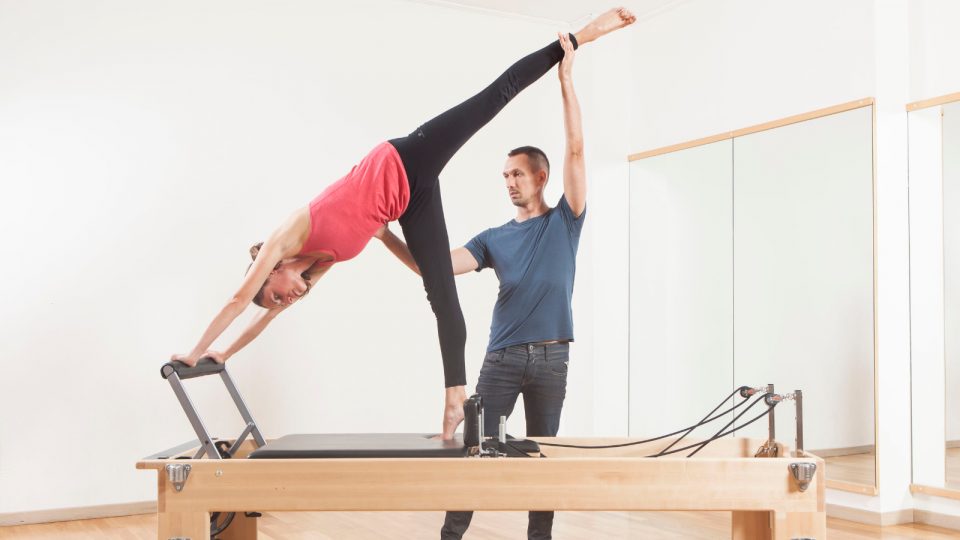What if you could find increased length in your legs through better hip extension and more efficiently activated glutes? What if you could breathe more effectively so that you took in more oxygen with less work? Imagine if you had more extension through your thoracic spine so you could maintain improved form.
Each of these things tick all the boxes when it comes to trying to up level running performance, and as much as they may sound like a dream scenario, they’re not. This is Pilates.
Pilates is an exercise modality founded by Joseph Pilates in the 1920s, which uses centring from the core to achieve increased length throughout the body and improved spinal mobility.
Many people are turned off by Pilates because it sounds a bit la-ti-da, or only for dancers and gymnasts. But the truth is, “Pilates is for everybody!” exclaims Dianne Dall’Oglio of Emerald Pilates.
A studio owner, diploma qualified teacher, and long-time Pilates advocate, Di explains how the practice can be of benefit to everyone from elite athletes to those simply looking to be out of pain. And if you’re a runner, that translates to drastic improvements in running performance and welcomed decreases in running injury frequency or duration.
But to understand how this Pilates work translates to better running, you first have to understand some information around what Pilates is (and isn’t!)
1. Pilates isn’t about developing a six-pack
Having a strong core and getting a six-pack are two different things. If you do strength work in your training, alongside running, you may spend some time on abdominal exercises, working your core.

Here’s the news: the goal of doing Pilates has nothing to do with trying to help you get a six pack. The six-pack muscles (the rectus abdominus) are the superficial muscles on the top. The deep core muscles underneath – which Pilates targets – are where the magic happens.
You can think of this set of muscles, like your internal armour: learn to effectively activate them and you have less load on your spine, more freedom to articulate through your hips, increased range through your upper thoracic and better glute activation.
This core middle, when functioning optimally is the driver of making everything else in your body to work more efficiently – and without getting injured!
2. Pelvic alignment is king
In runners, the placement and alignment of the pelvis is critical. The repetitive nature of running means that if something is misaligned, eventually, after enough miles, something else will compensate for the disconnect.
Ryan hall, for example, a retired elite marathoner, experienced this all too well when what started as plantar fasciitis on one side, lead to a string of injuries on both sides due to imbalances. Proper core activation happens with proper pelvis alignment.
Learn this in Pilates and then take it to your running and suddenly an aligned pelvis starts to eliminate a lot of unwanted aches and niggles that creep up during training.
3. It’s about the off and on
Not the off and on in training, but the off and on in your muscles. We need to turn on the muscles and activate them to use them.

Sometimes, however, we get sore muscles because they have been overworked when they didn’t need to be working at all – and actually need to be relaxed and turned off.
Think about this: have you ever finished a long run and had a sore back or neck? Without even noticing, as you ran, your fatigue and increased stress on the body resulted in compensatory movements to maintain posture or body alignment.
Because you need to be upright to breathe and run, your neck and back muscles started to get overworked to hold you up when the rest of your body was getting tired.
In reality, what your body is designed to do is to hold you up from your deep core, and let your neck and back relax. If, however, due to poor core activation, the neck and back muscles are turned on for too long, and got overworked, poor running technique may be the outcome – and two days later, you certainly know!
4. You have to go back to breathing
Perhaps one of the most fundamental and critical pieces of running success is breathing.

How well the body can take in and use oxygen governs every aspect of your success. It is not a coincidence that Pilates benefits runners because one of the core principles of Pilates is breathing: learning to breathe more efficiently into the breathing space in your body is a game-changer for your running success.
5. The goal: work less to get more
This is running efficiency at its most rudimental. When you are running, if you can do less work in your body, but get an improved outcome, this results in augmented running efficiency.
Running efficiency is a key marker of running success both currently and in your future running endeavours, and is a metric that recreational and elite runners alike, are always striving to improve.
Pilates is a gold mine of goodness when it comes to the ways it can help improve your running performance. If you’re ready to see the transformation, visit your local Pilates studio and see how you can get started!
Well runners, let’s go train up our muscles before the race starts, shall we?





